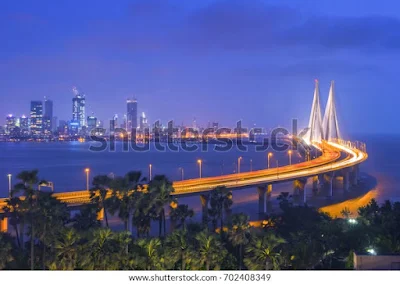Introduction:
Mumbai, the bustling metropolis on the western coast of India, holds a rich and captivating history that spans several centuries. Renowned for its vibrant culture, economic significance, and cinematic legacy, the city has undergone numerous transformations. In this blog, we will delve into the history of how Bombay became Mumbai, tracing its journey through time and exploring the factors that contributed to this change.
1. Early Beginnings:
The roots of Mumbai can be traced back to ancient times. The region was inhabited by indigenous communities and witnessed the rule of various dynasties, including the Mauryas, Chalukyas, and Silhara rulers. The islands of Bombay were known for their strategic location, serving as important trade centers for centuries.
2. Colonial Era and the Arrival of the British:
In the 16th century, the Portuguese arrived in the region and established their presence. They ceded the islands of Bombay to the British Crown as part of the dowry of Catherine of Braganza when she married King Charles II of England in 1661. The British East India Company soon recognized the potential of Bombay as a major trading hub and developed it into a thriving port city.
@
3. Development and Expansion:
Under British rule, Bombay flourished as a center for trade and commerce. The city underwent significant urban development with the construction of impressive infrastructure, such as the Bombay Fort, Town Hall, and Victoria Terminus (now Chhatrapati Shivaji Maharaj Terminus). The opening of the Suez Canal in 1869 further boosted Bombay's importance as a gateway to India.
4. Socio-cultural Influences:
Throughout its history, Bombay has been a melting pot of diverse cultures and communities. The city attracted people from different regions, including Gujaratis, Marathis, Parsis, and various other ethnic groups. This multicultural fabric shaped the city's identity and contributed to its cosmopolitan character.
5. Rise of Nationalism and the Name Change:
During the Indian independence movement, the city witnessed significant political activism and played a pivotal role in the struggle against British colonial rule. As India approached independence, there was a widespread sentiment to reclaim indigenous names. In 1995, after several years of political debates and public demand, the city officially changed its name from Bombay to Mumbai, derived from the local Marathi name for the goddess Mumbadevi.
6. Post-Independence Growth:
After independence, Mumbai experienced rapid industrialization and emerged as a major financial and commercial hub. It attracted migrants from all over India, seeking opportunities and contributing to the city's rapid growth. The Bollywood film industry, which blossomed in Mumbai, became an integral part of its cultural fabric and contributed to its global recognition.
7. Modern Mumbai:
Today, Mumbai stands as India's financial capital, hosting a thriving business sector and housing some of the country's largest corporations. The city's skyline boasts impressive skyscrapers, while its vibrant markets, bustling streets, and iconic landmarks continue to captivate residents and visitors alike. Mumbai remains a city of dreams, attracting individuals from all walks of life who seek to make their mark in various fields.
Conclusion:
The journey from Bombay to Mumbai encapsulates the city's transformation from a small fishing village to a global metropolis. Its historical legacy, colonial influences, and post-independence growth have shaped its unique identity. Mumbai's rich history, coupled with its cultural vibrancy and economic significance, make it a city that continues to thrive and captivate the world.
As we traverse its streets, we are reminded of the indomitable spirit and resilience of its people—a testament to the dynamic and ever-evolving nature of this incredible city that we now know as Mumbai.



.jpeg)
.jpeg)


No comments:
Post a Comment